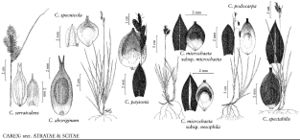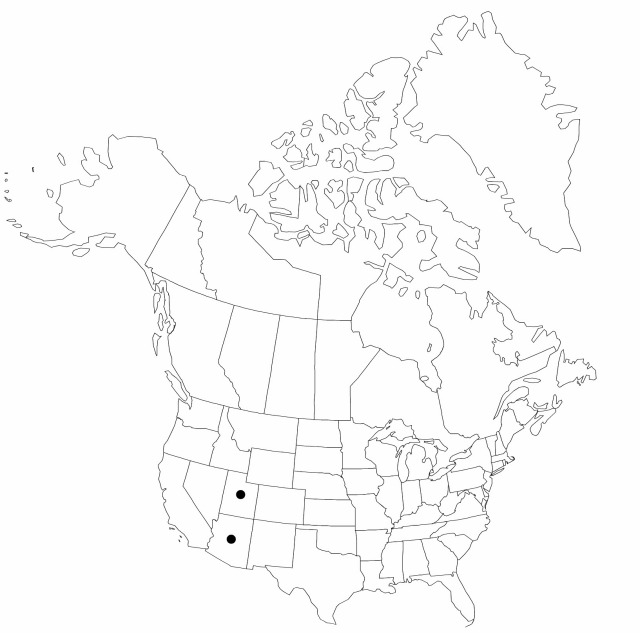Carex specuicola
Leafl. W. Bot. 5: 148. 1949.
Plants loosely cespitose. Culms 25–45 cm, distally finely scabrous. Leaves 1–3 mm wide. Inflorescences: proximal bracts shorter than inflorescences; spikes erect or, sometimes, lateral spikes pendent or divergent, separate, short-pendunculate, short-oblong or elongate, 5–20 × 3.5–4 mm; lateral 1–3 spikes pistillate, of similar lengths; terminal spike gynecandrous, consisting of few pistillate flowers at summit of an otherwise staminate spikes (when perigynia fall at maturity, spikes appear to be wholly staminate). Pistillate scales light brown, somewhat hyaline, margins hyaline, often broadly so, narrowly lanceolate or ovate, shorter than and narrower than perigynia, midvein broad and lighter colored than body, conspicuous, sometimes raised, prominent, apex acute or short-mucronate. Perigynia ascending, pale yellow to light brown, faintly veined, obovate or circular, 2.5–3.5 × 1.5–2 mm, apex abruptly beaked, distal margins papillose, serrulate; beak 0.25–0.5 mm, bidentate, finely papillose and serrulate. Achenes nearly filling body of perigynia.
Phenology: Fruiting Jun–Sep.
Habitat: In crevices on rock faces with seeps, small “hanging gardens”
Elevation: 1100–2000 m
Discussion
Of conservation concern.
Carex specuicola is in the Center for Plant Conservation’s National Collection of Endangered Plants.
Selected References
None.

